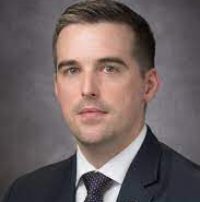Expert Panel:

Dr. William Wierda, President & CEO, CLL Global Research Foundation

Dr. Patrick Reville, Assistant Professor in the Department of Leukemia at The University of Texas MD Anderson Cancer Center

Jeff Folloder, Moderator and CLL patient advocate
Our recent CLL Global Research Foundation virtual town hall featured CLL Global President, Dr. William Wierda, and Dr. Patrick Reville, Assistant Professor in the Department of Leukemia at The University of Texas MD Anderson Cancer Center. CLL patient advocate Jeff Folloder moderated the event. Watch the full webinar.
Transcript
Jeff Folloder:
Dr. Wierda, can you explain a little bit about ASH, what’s going on there, what it’s all about, and maybe some of the research highlights from that meeting?
Dr. William Wierda:
Sure. Thanks, Jeff. I have just a few slides. So, as Jeff said, The ASH, or American Society of Hematology meeting, is an annual meeting that we have.
It’s usually the first or second week in December. That’s where clinical scientists and laboratory scientists from all over the world come together and share their research and new results in presentations. Those presentations can be oral presentations, which are about 10 minutes of a lecture or speech with slides, or they can be posters, where their data is displayed in poster format. And there are educational lectures during the sessions. And it’s something that we all look forward to every year, and it’s the really the place where new research is presented. New data, it’s – there are other meetings during the year, but it is our main big meeting.
A couple other meetings to just touch on, one is the American Society of Clinical Oncology, or ASCO. That does have malignant hematology data presented.
But it’s mostly made for solid tumor, solid tumors and ongoing research, clinical research in solid tumors. That’s in June every year. We do attend that.
And then around the same time is the European Hematology Association, or EHA, ee-ha, and that’s the European meeting. That’s the European hematologist meeting that’s a bit smaller, but it’s every year, and we do see important data reported at that meeting as well.
So, if we go to the next slide, what I wanted to do is just touch on some of the key presentations. Now, the important data that is presented is usually selected for oral presentations. So, I have three slides here that summarize the oral presentations and the data that I’m going to talk about, the data that was presented with them and sort of the highlights for those data.
The first two slides have more abstracts or presentations listed on them, and then the last one just has one.
So, this slide summarizes the oral presentations that related to first treatment for patients with CLL. And just briefly to review them, the first one was a long-term follow-up presentation that Adrian Wiestner gave on outcomes with ibrutinib (Imbruvica), particularly as first-line therapy. What we learned from that 10-year experience is that the average creative time that ibrutinib maintains control of the disease in the frontline setting is nine to 10 years. That’s maintenance, it’s continuous until it doesn’t work any longer. But patients, if it’s used as the first treatment, are doing extremely well with maintenance upwards, on average, of a 10-year period of disease control.
That’s the first time we’ve seen sort of the average reported because it takes a long time to collect that data, and we don’t have the median, for example, for acalabrutinib (Calquence) or zanubrutinib (Brukinsa) yet. We do anticipate that it’ll be as good if not better than ibrutinib, and those data will be forthcoming.
The ELEVATE TN trial is a frontline trial with acalabrutinib. It was three arms, and it compared treatment with acalabrutinib by itself, acalabrutinib plus obinutuzumab, or chemoimmunotherapy. And that trial demonstrated improved outcomes with acalabrutinib or acalabrutinib plus obinutuzumab (Gazyva). This was a long-term follow-up report, and really not any significant additional conclusions from that report compared to what we already knew about. It does appear that patients with 17p deletion, while they do very well with acalabrutinib-based treatment…the addition of the CD20 antibody probably doesn’t add a lot to the treatment for that particular population of patients with 17p deletion.
The GAIA trial was a large, randomized trial looking at four different treatments, three of which were venetoclax-based (Venclexta) and one of which was chemotherapy. That trial demonstrated improved outcomes for venetoclax-based treatment over chemotherapy if venetoclax is given with obinutuzumab. Either venetoclax plus obinutuzumab or venetoclax, obinutuzumab, plus a CD20 antibody. Venetoclax, obinutuzumab, and ibrutinib.
That trial illustrated – and we’ve seen the data before – that obinutuzumab is a better CD20 antibody compared to rituxumab, so we prefer obinutuzumab, particularly in this trial, demonstrated when given with venetoclax.
There doesn’t yet appear to be a difference in terms of outcomes for venetoclax/obinutuzumab with or without the addition of ibrutinib, but longer follow-up and subsequent reports may show something different.
The CAPTIVATE trial is a trial that has been going on for several years. This was a five-year follow-up. The important point from that report was for patients, for the few patients that have had their disease return and has needed to be retreated, for those patients – and this trial, CAPTIVATE was ibrutinib plus venetoclax for one year of treatment – but for the patients whose disease has come back after they’ve been in remission, we didn’t see mutations in BTK. And so the important point there is that patients should maintain their sensitivity to treatment, whether we’re talking about ibrutinib or venetoclax or the combination.
And, in fact, those patients who have been retreated with either ibrutinib or combined ibrutinib/venetoclax have responded to treatment, and that was the important follow-up from the CAPTIVATE trial.
A longer-term report for the GLOW data, which was ibrutinib/venetoclax compared to chemoimmunotherapy, really not any new conclusions from that, but longer follow-up.
And the FLAIR trial was an important trial that P. Hillmen presented, which was a comparison of ibrutinib/venetoclax versus chemotherapy, the FCR regimen. That trial demonstrated improved outcomes with ibrutinib/venetoclax over chemotherapy or chemoimmunotherapy. And that trial allowed treatment for two years, up to six years with combined ibrutinib and venetoclax combined therapy. And patients could stop earlier than the six-year time point if they became MRD undetectable.
So, that trial is important, and continued follow-up for that trial will be important because of this ability to treat longer with the combination, and the discontinuation of treatment based on MRD status.
If you go to the – so, that’s the summary for frontline. For relapsed disease, I’ll go in the interest of time a little bit quicker. If you go to the next slide. There were several abstracts that were presented for patients who had previously received treatment. There was an update from ALPINE that was a comparison of zanubrutinib versus ibrutinib and demonstrated improved tolerability for zanubrutinib, and a bit better efficacy with zanubrutinib compared to ibrutinib.
The CLL2-BAG study is a trial with acalabrutinib, venetoclax, and obinutuzumab. That showed impressive outcomes in relapsed patients with that combination.
There were two abstracts presented with pirtobrutinib (Jaypirca), one demonstrating activity in patients who had had a prior covalent BTK inhibitor. Most of them had had prior ibrutinib, but they could also have had prior acala or zanubrutinib.
But very good activity with pirtobrutinib after a covalent BTK inhibitor. High response rate of 80 percent response and median progression-free survival of about a year-and-a-half.
And then we also reported on mutations associated with pirtobrutinib resistance. With the covalent BTK inhibitors, ibrutinib, acala, and zanubrutinib, the predominant mutation of BTK that arises that’s associated with resistance is the 481 mutation. It’s different from pirtobrutinib, and that was the important presentation with regard to that abstract that Jennifer Brown presented. Patients who go on pirtobrutinib will lose that 481 mutation, but when they develop resistance, they’ll acquire a couple of other different mutations in BTK as a resistance mechanism.
Tanya Siddiqi presented an update on the Liso-cel trial, the CD19 CAR T-cell trial. That was not – it was more patients who had been treated and longer follow-up on that trial, but definitely clinical activity in patients who are refractory to BTK and BCL2 inhibitor-base therapy with Liso-cel. And we know Liso-cel is currently under review by the FDA for potential accelerated approval.
Jennifer Woyach presented an abstract on a drug referred now to as LP168. It doesn’t yet have a name. It’s another BTK inhibitor. And there was a bispecific ROR1 monoclonal antibody that was presented, a Phase I clinical trial referred to as NVG-111.
And then finally, on the last slide is a trial that Othman Al-Sawaf presented, which was a combination of the PD1 antibody with zanubrutinib for patients with Richter’s transformation demonstrating activity
There are other trials that have studied similar combinations and have demonstrated activity. The novel aspect of that, I’m not going to go through the rest of these slides because there’s not adequate time, and these trials are trials that we have open and activate at MD Anderson, so we’ll skip those.
And that’s really a highlighted summary of what was presented and discussed at the ASH meeting in December. We can talk about the data more during this session, the question session if we like.
Jeff Folloder:
So, I think what I’m hearing is every day that goes past, we’re getting further and further away from chemotherapy.
Dr. William Wierda:
I have moved completely away from chemoimmunotherapy. I almost never use it. So, yes, the answer to your question is yes, we still see it used in the community a bit, but I have a harder and harder time justifying that selection.
Jeff Folloder:
Dr. Reville, are there some highlights from ASH that you’d like to discuss? What would you like to add?
Dr. Patrick Reville:
You know, I don’t think that I have a whole lot to add. I think Dr. Wierda did a very good sort of broad overview of the highlights of ASH. I mean, I think for me, it was the majority of what I took away from the ASH presentations was really the continued follow-up of sort of the newer non-chemotherapy options, both on the frontline and the relapse setting, showing really good activity and sort of good safety profile with some emerging data, I think, over time that helps us decide between different therapies for different patients, and then different combinations.
That space is starting to become a little bit more clear as we think about personalizing therapies for individual patients.
And that’s really only kind of known as we get this longer data, so I think at this stage here and moving forward, we’ve got really good, long-term data on a number of these agents to really help us decide.
From a scientific standpoint, like I said, I have strong interest in the immune system and sort of its interaction with CLL, so the other thing that’s really nice about the ASH conference from my standpoint is that in addition to the clinical research, there’s a lot of basic and translational science presented at that meeting. So, there were a number of abstracts that really looked at the immune system and its function within CLL, and that’s really an emerging space. So, there’s a number of people that are working on that, and I think that there’s some stuff that will be coming down the road that will be helpful there.
Jeff Folloder:
Up until now, I haven’t had the opportunity to pick your brain, so I’ve got a question for you. What other areas of CLL research are you particularly interested in?
Dr. Patrick Reville:
Yes, I mean, I think there’s a few things. You know, like I said, I think this aspect around the immune system, and in particular as it relates to immunotherapy is interesting. CLL kind of stands a little bit uniquely in the lymphoid malignancies, and that includes the other lymphomas as well as ALL, where immunotherapy really hasn’t been a major player, and the activity rates of things like CAR-T cells or some of these other immune-based agents to date hasn’t been as well explored in CLL as it has in some of these other settings. And so I think that there’s a lot of room for that to grow over time.
I think as I think forward, there’s a number of aspects. Since we’re doing in a lot of ways better at treating CLL and getting away from chemotherapy-based treatments, there’s a large focus that is on survivorship and trying to optimize these treatment strategies such that we’re maximizing sort of patient outcomes and incorporating that sort of mentality into the way that we’re studying these drugs to really sort of optimize patients’ well-being sort of at a more global level, in addition to their CLL-specific outcomes.

